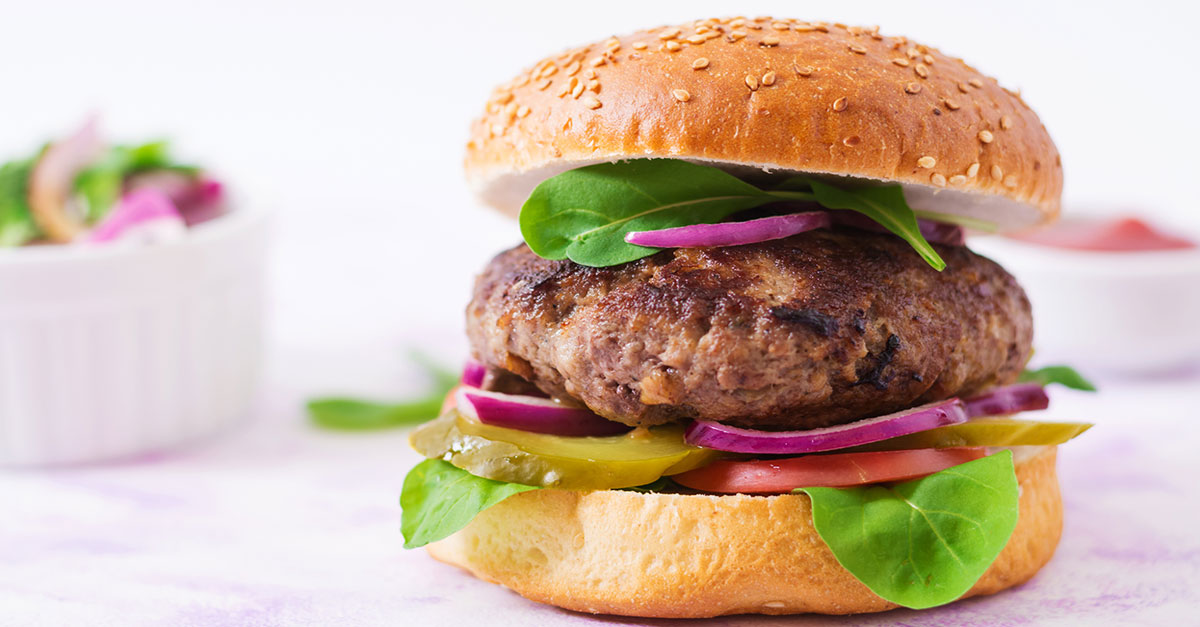Depending on your age, you may have grown up thinking that red meat was either great for your health or horrible for your health.
From all the studies in the new, you’ve probably concluded that it is best to limit intake to very small amounts.
But an Australian study shows that eating a moderate amount—not a small amount—of red meat may be good for our mental health. But it needs to be a certain type of red meat…
EAT TO BEAT DEPRESSION & ANXIETY
Interestingly, researchers found that women who consumed the equivalent of one to two ounces of red meat—beef or lamb—per day were about half as likely to be diagnosed with anxiety or depression as women who ate more or less red meat. The association was found only when they ate unprocessed red meat—which knocks out cold cuts, hot dogs and many fast-food burgers. (The researchers aren’t sure whether the same would hold true for men, but they will be testing that next.)
Did you notice the eyebrow-raiser in there? Eating little meat, which is what many people do to stay healthy, was associated with increased anxiety and depression, compared with eating some (but not a lot of) red meat. To put the amount of meat in everyday terms, a burger patty is typically about four ounces, so eating one to two ounces a day, the “sweet spot” in the study, is the equivalent of eating about two or three modestly-sized burgers a week.
But we’re not talking about just any old meat. It was a specific kind…
ALL BEEF IS NOT CREATED EQUAL
To learn more about which red meat is best, we spoke with Felice Jacka, PhD, associate professor at the Deakin University School of Medicine in Australia, who led the research.
In Australia, they feed their cows and sheep grass—and that is the first thing that Dr. Jacka pointed out. Here in the US, the vast majority of cattle and sheep are fed mostly grains, mainly because a grain-fed cow or sheep can reach “slaughter weight” faster than one that is grass-fed. But what animals eat affects what we eat when we eat them.
Here are the nutritional benefits of grass-fed meat…
• Compared with grain-fed meat, grass-fed meat is leaner, containing less saturated fat and fewer calories. This is beneficial because a diet high in saturated fat may activate the body’s stress response system, and that has been shown to trigger anxiety and depression.
• Grass-fed meat also contains a smaller amount of omega-6 fatty acids and a greater amount of omega-3 fatty acids. Eating a lot of omega-6s stops omega-3s from performing their anti-inflammatory responsibilities. And inflammation may be a cause of anxiety and depression, said Dr. Jacka, just like it contributes to so many other disorders. This may be one reason why the Australian women who ate little red meat had higher rates of anxiety and depression than those who ate a moderate amount.
• Grass-fed meat contains more conjugated linoleic acid (which is good for you because it may reduce body fat and improve immunity), more of vitamins A and E, more antioxidants and more beta-carotene than grain-fed beef. Dr. Jacka isn’t sure if those factors also helped decrease the risk for depression and anxiety, but it’s possible.
GO FOR GRASS-FED
It’s critical to point out that Dr. Jacka’s study does not prove that red meat prevents or cures depression or anxiety—what it shows is an association, but not necessarily causation.
Still, if depression or anxiety runs in your family, or if you suffer from one of the disorders, eating a moderate amount of unprocessed red meat (seven to 14 ounces a week) might be a good idea, said Dr. Jacka. Of course, it’s important not to go overboard, because other studies have linked large amounts of red meat to increased risk for health problems such as cardiovascular disease, type 2 diabetes and cancer. One recent study from the Harvard School of Public Health in Boston linked eating one serving a day (or 21 ounces a week) of unprocessed red meat with a 13% increased risk for premature death.
If you’re basing your diet decision on the evidence, then you’ll have to eat only grass-fed meat. Look for the word “grass-fed” or, ideally, “grass-finished” (meaning grass all the way to slaughter) on the package—you can find this type of meat at many markets now. Be prepared to pay more than you would for grain-fed meat…but if it’s better for your health, it may be worthwhile to “pay the price” now as opposed to later!


